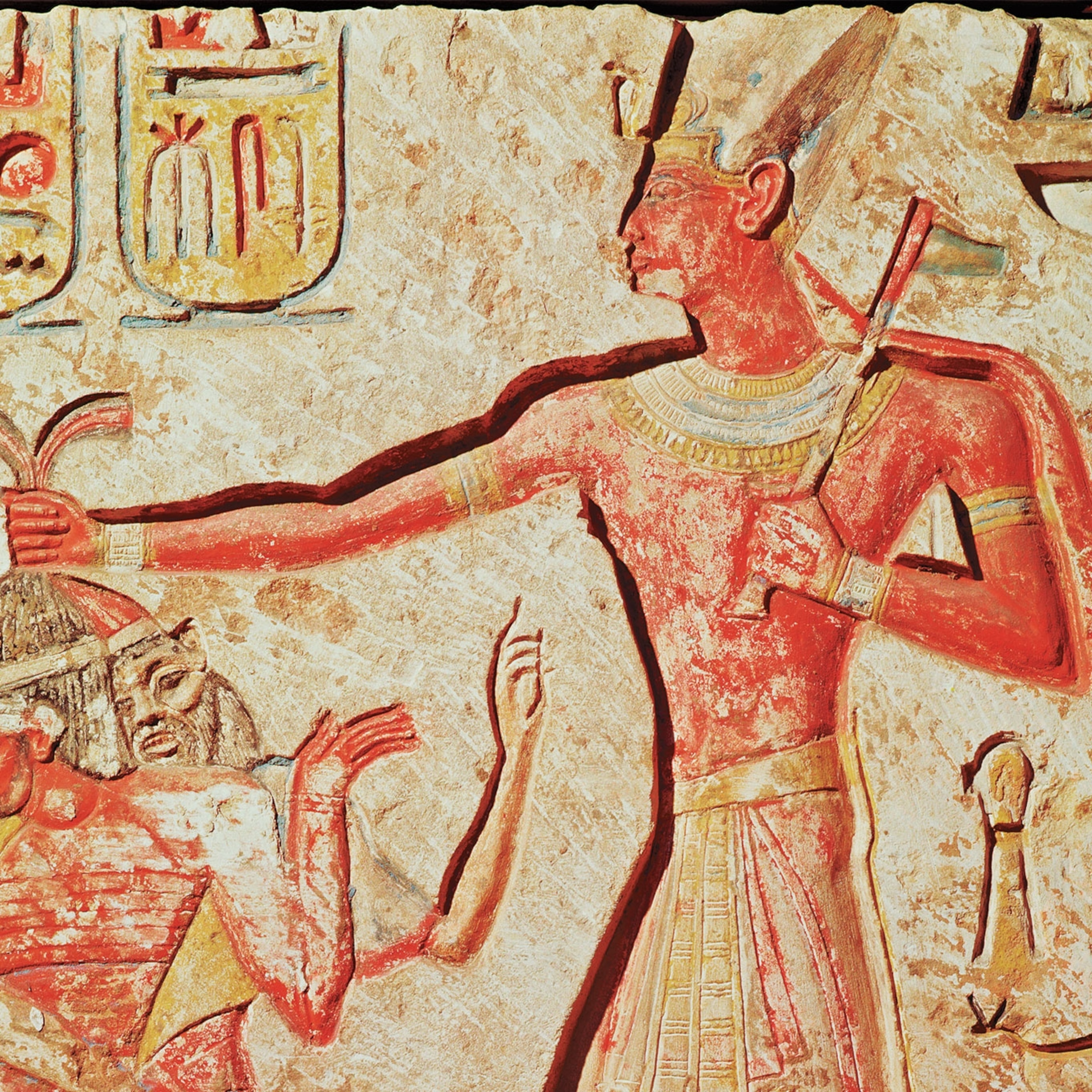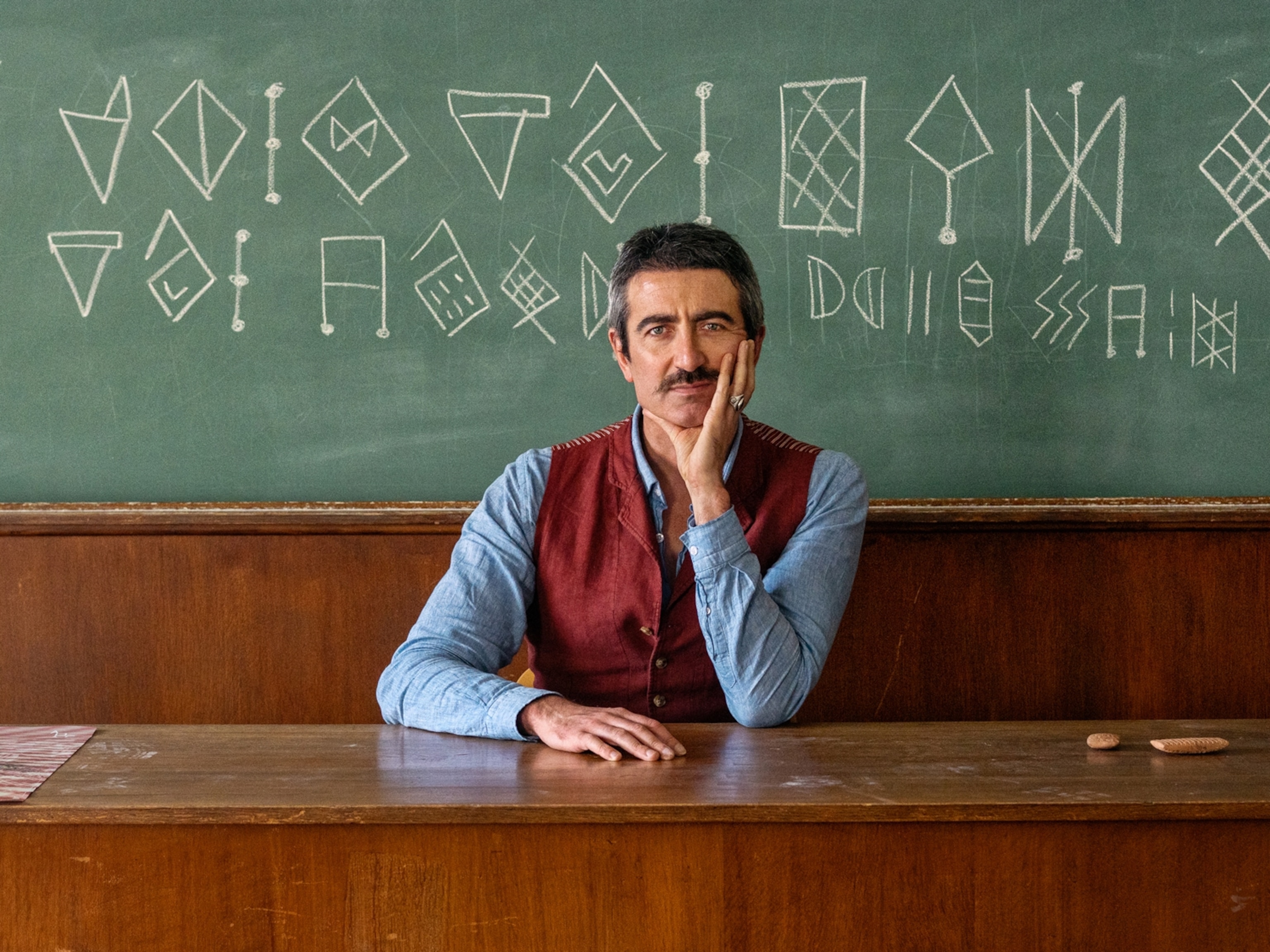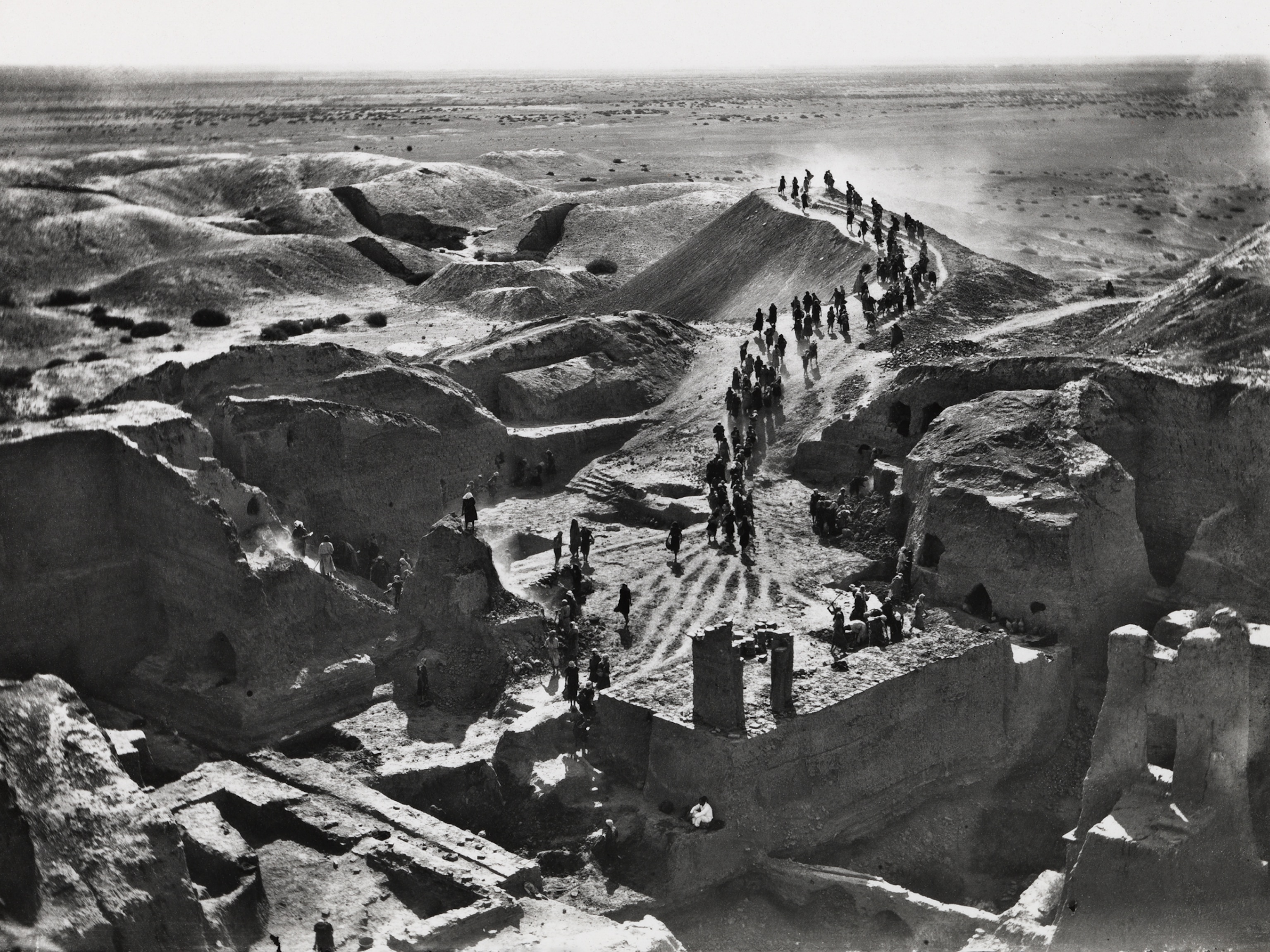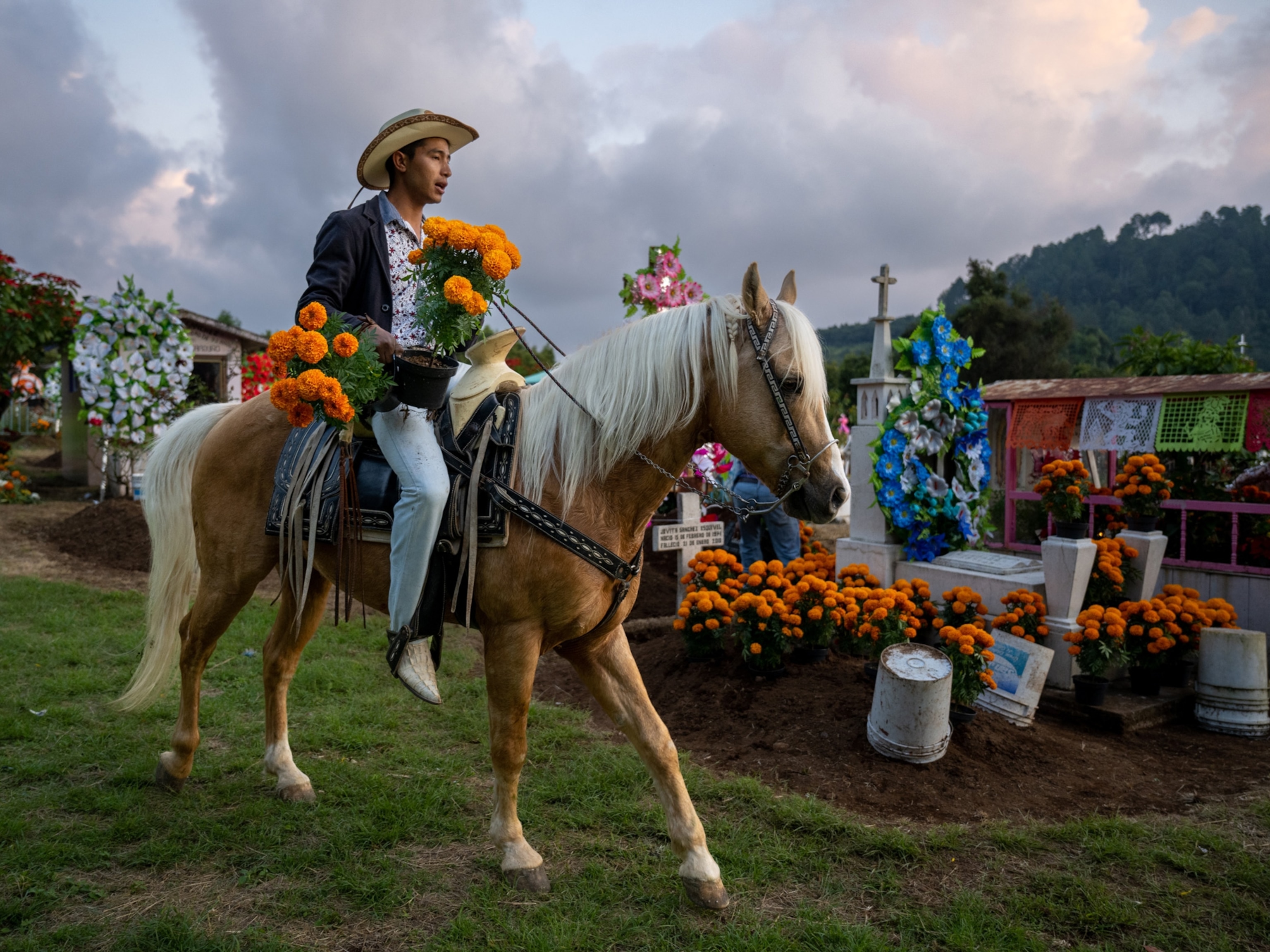
First Australians
Aboriginals had the continent to themselves for 50,000 years. Today they make up less than 3 percent of the population, and their traditional lifestyle is disappearing. Almost. In the homelands the ancient ways live on.
A finger across the throat and a glance seaward. That’s the signal. The two men grip their spears, hand-carved from stringybark trees, and walk barefoot over the red soil to the water’s edge. Then into the aluminum dinghy, engine revved, and across a warm shallow bay of the Arafura Sea, at the wild edge of Australia’s Northern Territory.
Terrence Gaypalwani stands at the bow, feet spread for balance, staring intently at the water and indicating with the tip of his spear which direction to travel. He’s 29 years old, mid-career as a hunter. Peter Yiliyarr, over 40, a senior citizen, works the motor. The shoreline’s a lattice of mangrove roots; the sun’s a heat lamp. No sign of another human. Gaypalwani stares, points. Thirty minutes. The men haven’t spoken, though even when they’re not hunting, the Yolngu sometimes communicate solely in sign language.
Then Gaypalwani raises his spear, cocks his shoulder, and I look over the side of the dinghy and see a great shadow in the water. Yiliyarr guns the motor, and the spear is heaved, a violent throw. The shadow rises, the spear falls, and the two intersect at the water’s surface.
The turtle, struck, dives deep. It’s as big around as a card table and probably older than either of the men. The metal tip of the spear, buried in the turtle’s shell, dislodges from the shaft, as designed. The shaft floats off—they’ll retrieve it later—but a rope has been tied to the notched base of the spearhead, and the line whizzes out, fed from a coil by Yiliyarr. Both men have thin, elongated scars across their palms and chests. The line runs completely free, though attached to the other end is a white, basketball-size buoy. It flies from the boat and disappears beneath the water. The men stand, scanning.
The ball pops up, and the boat zips toward it. This time it’s Yiliyarr with his spear, and when the turtle appears, he lets fly, and again the spear is true. The tip dislodges, and a second rope plays out. Gaypalwani reaches into the water to grab the first rope, and both men tug, veins rising, hauling the ropes in hand over hand, and soon the turtle is pulled to the side of the boat.
The men reach over, and each grabs a thick, flapping flipper, braces his feet against the side of the boat, and leans back. The turtle rises from the water, and the men fall backward as it slides into the tiny boat, the weight of the creature tossing the dinghy about.

Before I was able to visit Matamata, a lost-in-the-bush village of 25 or so people, I needed permission from Gaypalwani’s mother. Phyllis Batumbil is the matriarch of Matamata, a woman of unrestrained opinions whose laugh could loosen your hat and whose scowl could, and often did, set a dog to whimpering. There are two telephones in Matamata. Batumbil owns one. The rest of the village shares the other.
I rang, and Batumbil answered. She speaks several dialects of Yolngu Matha, the language of the Yolngu, as well as excellent English. Like many Yolngu, she uses an English first name and an Aboriginal second name and prefers to be addressed by her Aboriginal name. Batumbil is an artist—painting is among her many avocations—and we had been put in touch by the manager of an art gallery that represents her. She creates highly symbolic depictions of stingrays and lizards and other sacred totems on strips of bark and on hollow logs, using a brush made from her own hair.
I asked Batumbil if I could stay in Matamata for a couple of weeks and said I’d pay for room and board. Permission granted. Was there anything, I wondered, that I could bring?
“Dinner for 25,” she said.

I chartered a Cessna from one of the nearest towns, and the pilot flew low over the bush, the trees thin and straight and widely spaced, like a bad hair transplant, until we reached a large rectangular clearing with a handful of boxcar-shaped houses on one side, and the pilot set the plane down. Batumbil was sitting beneath an old mango tree, knitting a handbag out of natural fibers, surrounded by her five dogs. She was wearing a black tank top, a vibrant purple sarong, plastic-framed reading glasses, and red nail polish. Her hair, a ruckus of springy black curls, was corralled atop her head with a yellow ribbon.
I unloaded two duffels of personal effects and a dozen bags of groceries. Dinner for 25, I mentioned, is quite a load. Batumbil nodded. Take a look at all that food, she said. Could you imagine catching that much in one day using only a spear? And then again the next day and the day after that? I said it would be just about impossible. Aboriginal people, she said, have been doing it every day for at least 50,000 years.
For 49,800 of those years they had the continent to themselves. There were once about 250 distinct Aboriginal languages, hundreds more dialects, and many more clans and subgroups. But there is deep spiritual and cultural overlap among them, and indigenous Australians I spoke with said it was not insulting to combine everyone together under the general title of Aboriginal. They call themselves Aboriginals. They lived for a couple of thousand generations in small, nomadic bands, as befits a hunter-gatherer existence, moving in their own rhythms about the vast expanse of Australia. Then on April 29, 1770, British explorer James Cook landed his ship, the Endeavour, on the southeastern shore. The next two centuries were a horror show of cultural obliteration—massacres, disease, alcoholism, forced integration, surrender.

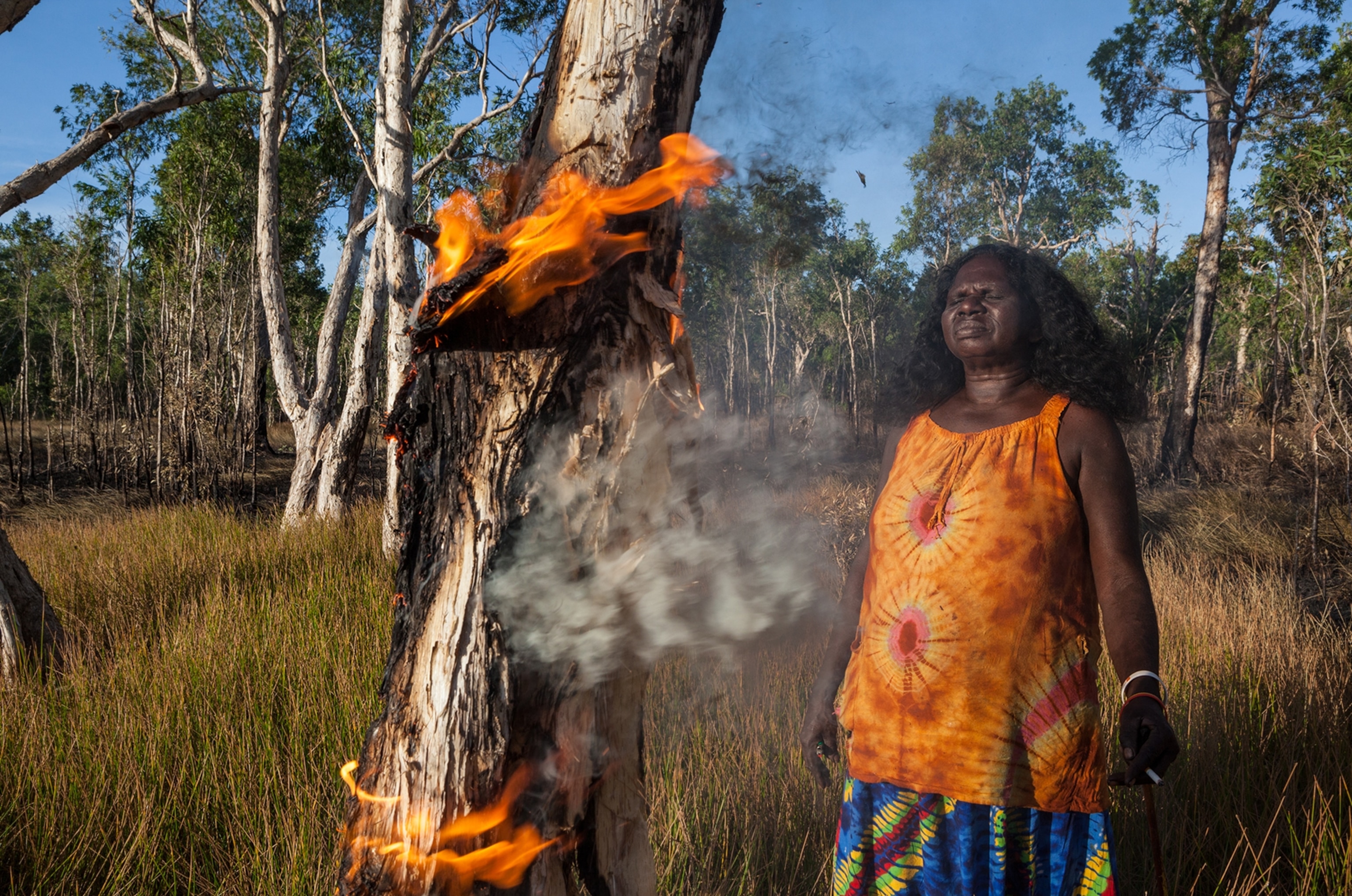
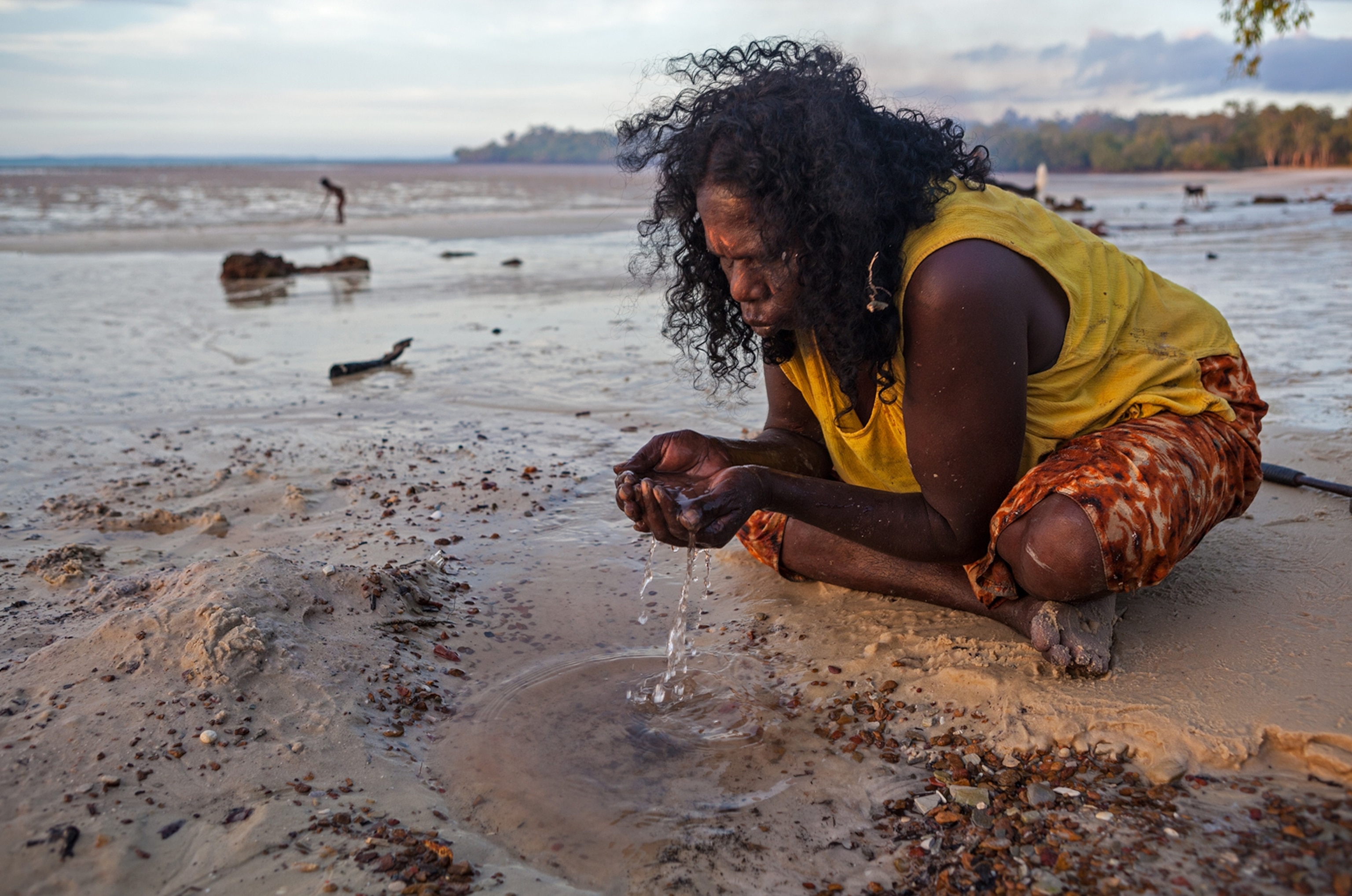
More than a half million Aboriginals currently live in Australia, less than 3 percent of the population. Few have learned to perform an Aboriginal dance or hunt with a spear. Many anthropologists credit Aboriginals with possessing the world’s longest enduring religion as well as the longest continuing art forms—the cross-hatched and dot-patterned painting styles once inscribed in caves and rock shelters. They are one of the most durable societies the planet has ever known. But the traditional Aboriginal way of life is now, by any real measure, almost extinct.
Almost. There remain a few places. Foremost is a region known as Arnhem Land, where Matamata is located, along with a couple dozen other communities, all connected by rough dirt roads passable only in dry weather.
Arnhem Land is not fully insulated from the modern world. It has solar electricity, satellite phones, aluminum boats, and flat-screen televisions hooked to DVD players. But it is impenetrable enough, rife with thorns and snakes and bugs and crocs. If the new generation chooses the supermarket over the spear, then the end will have truly arrived. I wondered what the likelihood of survival was. So I called Batumbil.
She surveyed my bags of supermarket food and asked if they were really for sharing. I assured her they were. Moments later—I don’t know what signal she made—people congregated around the groceries. I’d brought steaks and vegetables and cans of ravioli and boxes of fruit juice. Matamata is basically one extended family, home to Batumbil’s children, grandchildren, nieces, brothers. In a flash, everything was pocketed, even the snacks I’d purchased for myself. A few empty green shopping bags rotated in the breeze.
The look on my face must’ve given it away: Batumbil asked if I was hungry. I admitted I was. “Go with the boys and get a turtle,” she instructed.
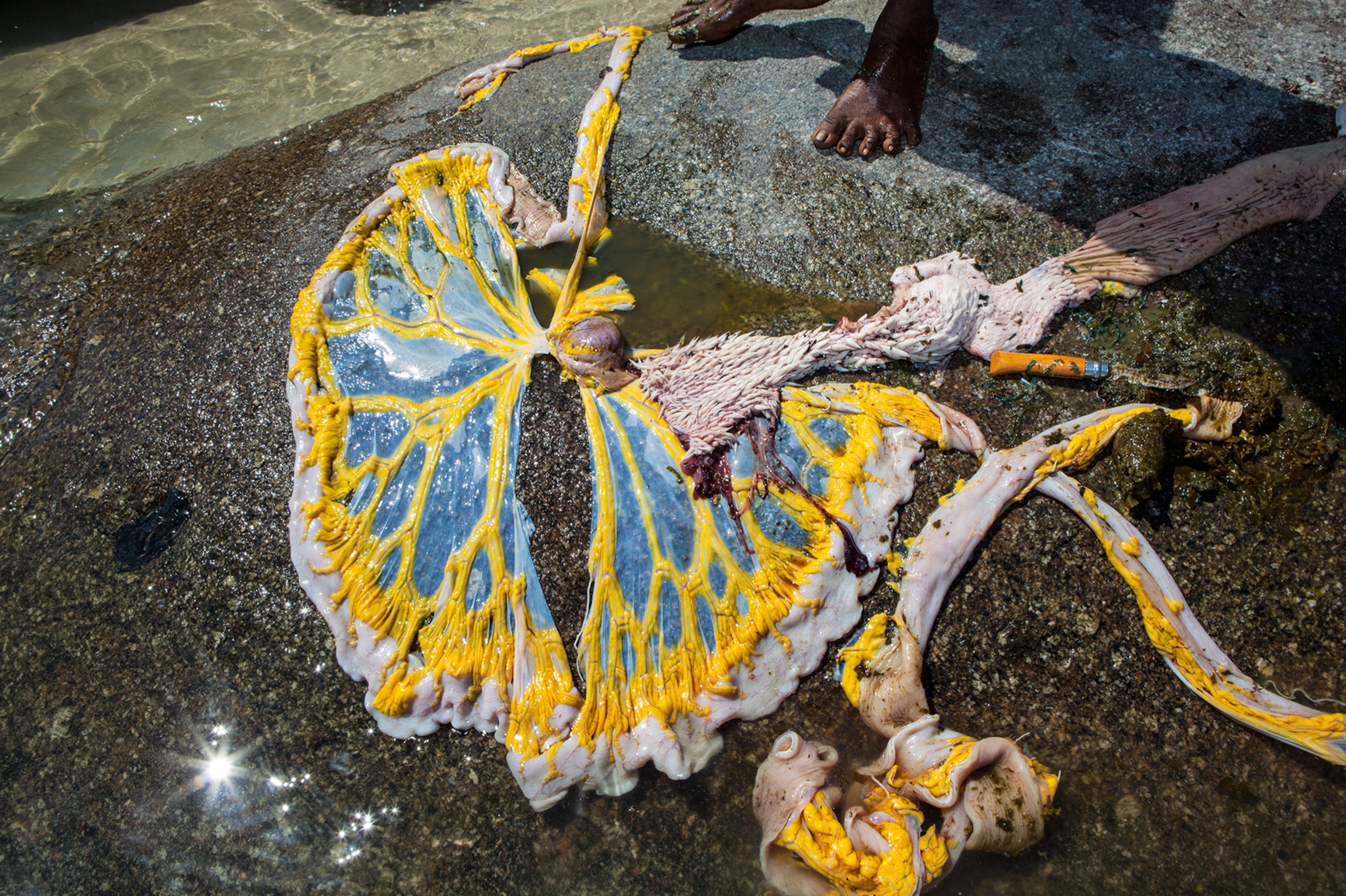
Here’s how you eat a sea turtle. First dig a very large fire pit. Collect firewood. Ignite. Place a few fist-size rocks in the fire, then drag the turtle over, plug the spear holes in its shell with bits of twig—this prevents the blood from spilling out while it’s cooking—and decapitate with an ax. Save the head; turtle cheek is delicious. Pull out the long white fire hose of intestines. These will be cleaned and boiled and eaten as well.
Using two sticks as tongs, remove the rocks you’ve heated in the fire and drop them in the turtle’s neck hole—this helps cook the meat from the inside—then stuff the hole with freshly cut foliage. With a partner, heave the turtle onto the fire, upside down, and cover with coals. A turtle comes prepacked in its own cooking container, like Jiffy Pop popcorn. Heat just ten minutes, then remove.
With the turtle still on its back, use your knife to carve open the flat bottom shell. Slice out large chunks of ivory-colored meat and ribbons of bright green fat. Collect the blood in a container. Distribute to everyone in the village; dogs get the flippers. Feast.
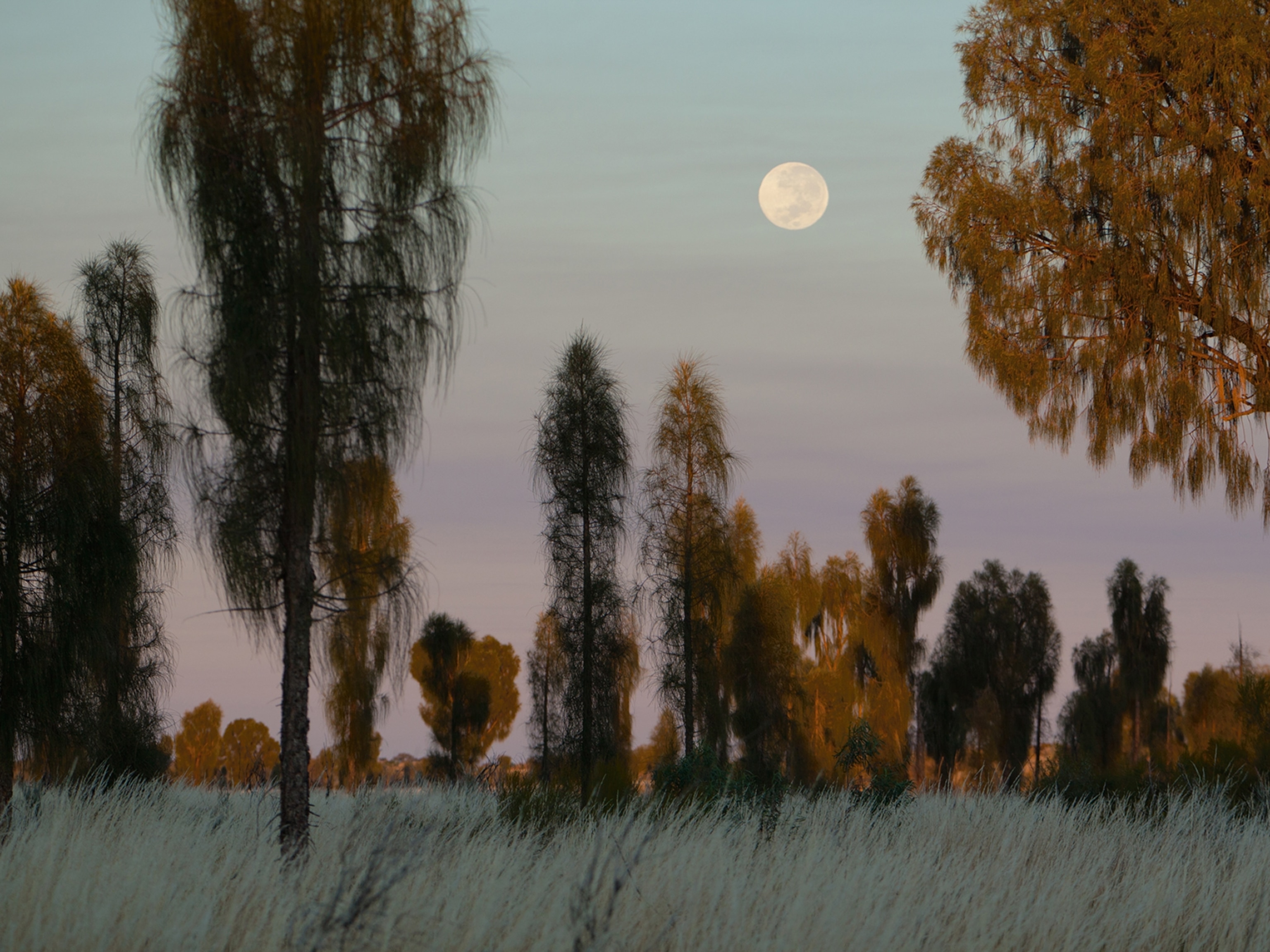
Sunset in Matamata is the time of the sand flies. Percussive slaps, palms on skin, sound from every front porch. There are five houses in Matamata, all in a rough line perpendicular to the shore, fronting the dirt runway. The modular homes, provided by the government, have corrugated-steel exteriors to thwart termites and are divided into three simple rooms.
Cooking is done outside over an open fire, though each house does have a sink with running water as well as a refrigerator. For the Yolngu, all the world’s a canvas—boulders, trees, bedroom walls, the exteriors of houses. They’re typically adorned with cross-hatchings or petroglyph-style human and animal figures. In Matamata even the refrigerators are painted; one is festooned with a spray of red and yellow palm prints and kiss marks.
Between the homes are small groves of mango and banana and cashew trees. Getting a snack requires little more than reaching into the branches. Even in a village this small—strolling the length of Matamata, leisurely, takes about three minutes—there are various neighborhoods: a couple of houses of bachelors, a couple of families with kids, and at the end farthest from the sea, Batumbil’s compound.
She shares a room with her mother’s sister, who’s in her 90s, while the other rooms are occupied by one of her sons and one of her grandsons, who himself has a young son—five generations, at times, in a single house. On Batumbil’s bed is a fuzzy blanket with a portrait of Elvis Presley. She loves Elvis. Everyone in Matamata generally gets along, but it’s still family. Each time Batumbil mentioned one person in the village, she automatically appended the word “lazy” to the name. Two of Batumbil’s grandsons once had such a fierce disagreement they ended up slicing each other with their knives.
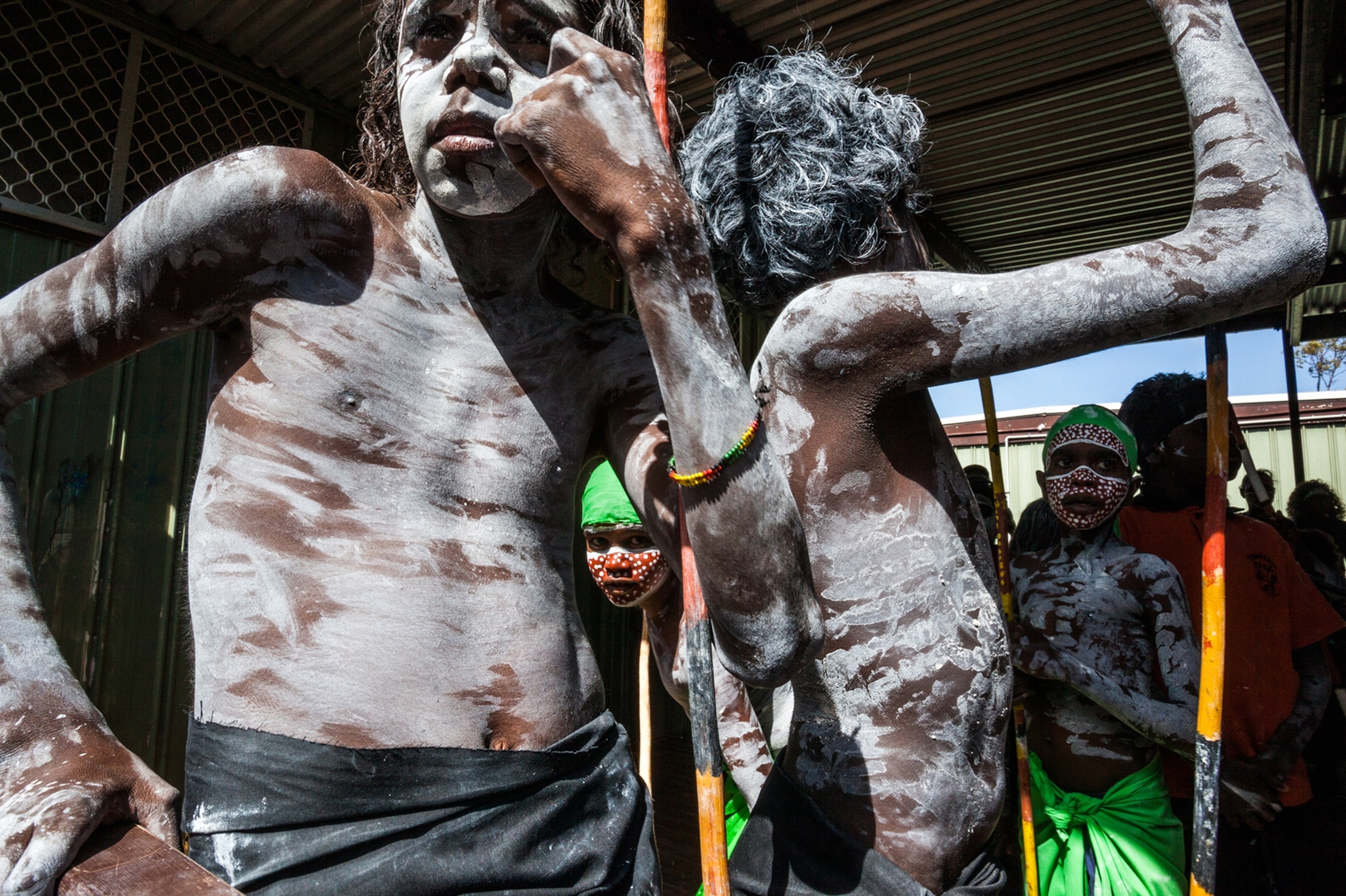
The smothering heat of daytime is passed languidly, doing domestic chores—whittling spears, washing clothes—or if the tide is right, going spearfishing. Turtle’s a year-round staple, but the men also catch stingray and kingfish and a walrus-size marine mammal called a dugong. It’s not until sand fly hour that Batumbil’s creativity begins to spike; she often paints or knits deep into the night and sleeps late. “My head’s not right in the morning,” she explains. Batumbil was born in 1956 in a community run by Methodist missionaries on Elcho Island, just off the northern coast of Arnhem Land. Her father had eight wives. Soon after birth, she was promised to a man, in traditional Yolngu fashion, and at age 15 was married. Her husband was more than 20 years older. He died in 2000.
In 1976 the Aboriginal Land Rights Act for the Northern Territory returned Arnhem Land, more than 35,000 square miles, to its traditional owners. Similar legislation repatriated tracts of territory elsewhere in Australia, though few as untrammeled as Arnhem Land. Some Aboriginal communities by this time were devastated by alcoholism and other ills. They still are. A hallmark of a hunter-gatherer lifestyle is immediate consumption; as soon as food is procured, it’s promptly shared and devoured. This makes complete sense in the bush, where leftover food swiftly spoils.
Most of the world had 10,000 years to gradually adapt to the cadence of a sedentary, agricultural society, one in which patience, planning, and preserving are key to survival. Aboriginals were expected, impossibly, to convert virtually overnight. Untempered consumption plus unlimited supply of a product like alcohol equals disaster. Same with processed sugars; obesity and diabetes are prevalent among Aboriginals. Also tobacco. Gasoline sniffing got so bad that a special brand of low-aromatic, nonaddictive fuel called Opal is all that’s sold in some Aboriginal areas.
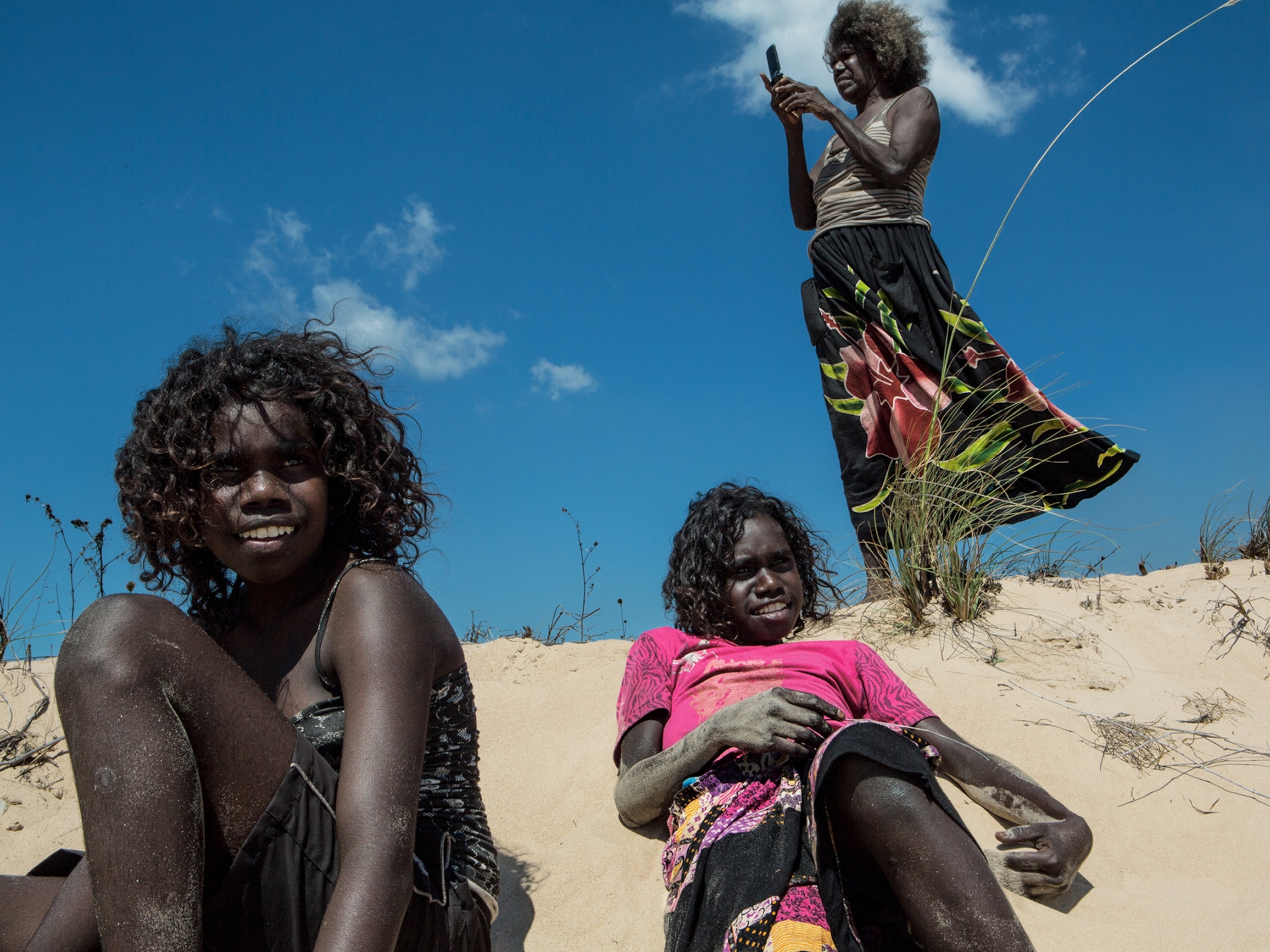
In the town of a few hundred residents where Batumbil and her husband lived on Elcho Island—he was a painter, she worked as a seamstress—it could be difficult to escape the lure of alcohol and its attendant violence. This was no place to start a family. Batumbil and her husband became convinced that the only happy life was one lived in quiet isolation, dependent on the bounty of the land. So they moved into the bush. “We decided to come home,” she says.
Her decision, according to local health workers I met, was wise. Possibly lifesaving. Compared with Aboriginals who reside in cities and towns, those in remote homelands eat healthier food, live longer, and are exposed to a fraction of the violence. The largest city in the Northern Territory is Darwin. In January 2012, in Darwin, one of Batumbil’s brothers was murdered in a knife fight. His body was delivered to Matamata. A sister-in-law, a drinker, undergoes daily dialysis treatments in Darwin. “If she’d been living here, she would have been saved from that sickness,” says Batumbil. “Anyway, we’ll bury her here.”
After moving into the bush with her husband, Batumbil had two sons—Gaypalwani’s the older one—and one daughter. Her daughter gave birth to three sons, then died of a heart ailment. The three boys, now in their teens and early 20s, all live in Matamata. Formal education in the village is intermittent. Batumbil is the teacher; she received education training at a college in Darwin. During my stay, though, no classes were conducted, and I never spotted a single book.
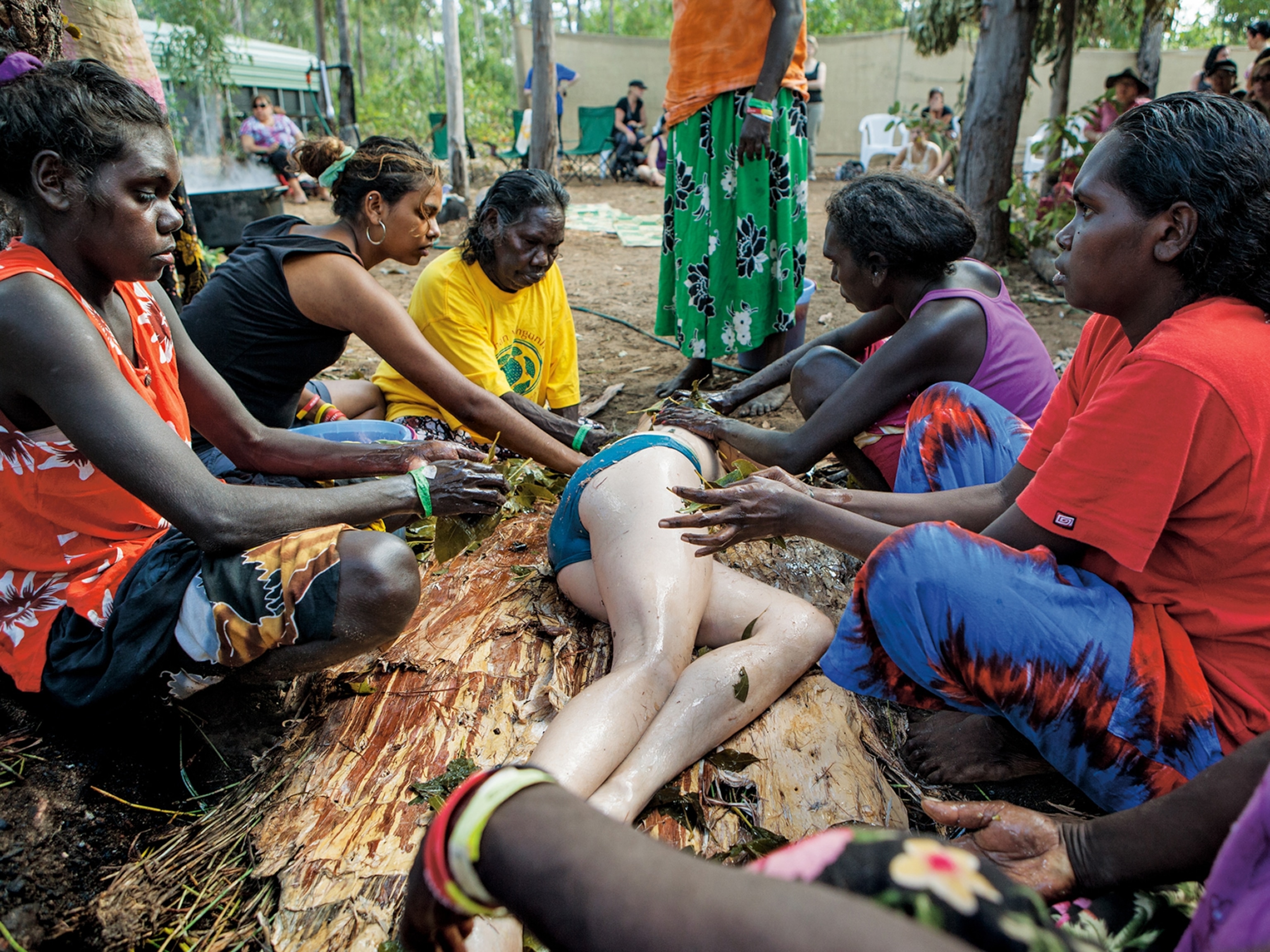
But the bush schooling is impeccable. Gaypalwani and his wife have twin nine-year-old boys, curly haired and exuberant. They race around with kid-size spears and sometimes accompany their father in his boat, observing him hunt. Every day they practice the intricate Yolngu dance steps while their parents clap along. Marriage promises and multiple wives, Batumbil says, are no longer common. Finding a partner now, she explains, is more modern. “You just run around everywhere like a brown ant until you get satisfied. Then you make a big hill.”
No alcohol is permitted in Matamata. This is, foremost, Batumbil’s rule. It is also the law. The Northern Territory Emergency Response of 2007, better known as “the intervention,” was billed chiefly as a reaction to the alleged number of child-abuse cases in Aboriginal communities. The controversial and racially charged initiative added more police officers to Aboriginal areas and imposed strict regulations on alcohol, among other measures. Some Aboriginals I spoke with reluctantly admitted that it has alleviated aspects of the crisis, though many Australians vehemently oppose it, saying the new rules infringe too greatly on personal freedoms.
In a mostly unpoliced area like Matamata, it’d be easy to circumvent the law, but Batumbil has zero tolerance for alcohol, and I never saw a drop. Batumbil, however, along with many of the adults, smokes like a chimney. She uses a long wooden pipe made from a hollowed-out tree branch—Batumbil’s cousin Djutu is the village pipemaker—stuffed with store-bought Log Cabin tobacco. Two items from the outside world dictate the quality of life in Matamata: tobacco and gasoline. When there’s no gas, boat engines can’t run, and turtles aren’t caught, and everyone gets hungry. When there’s no tobacco, it’s worse. I witnessed one intense shortage during which Batumbil smashed her favorite pipe, scraped out the resin caked inside, and smoked it in a new pipe.
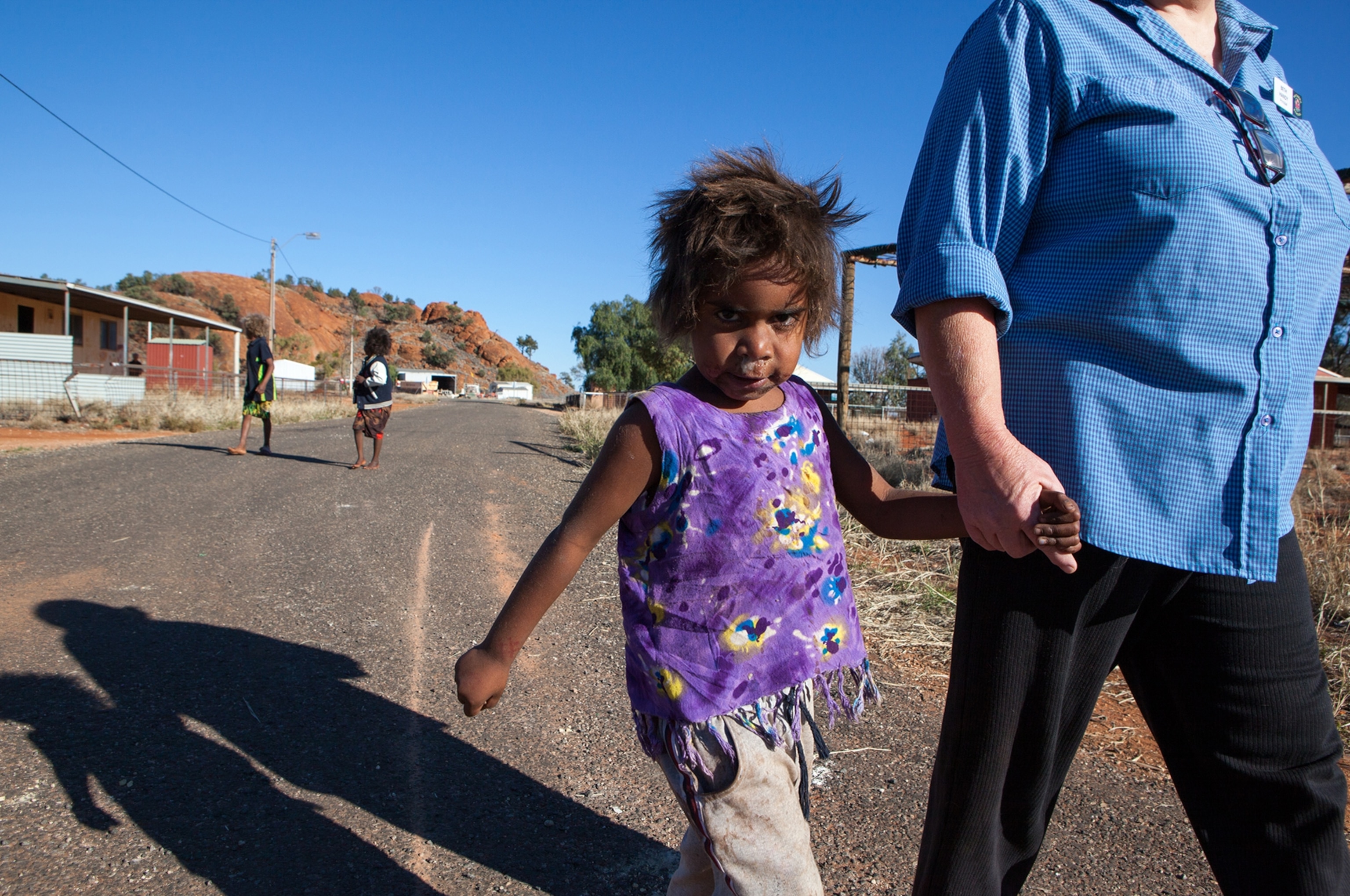
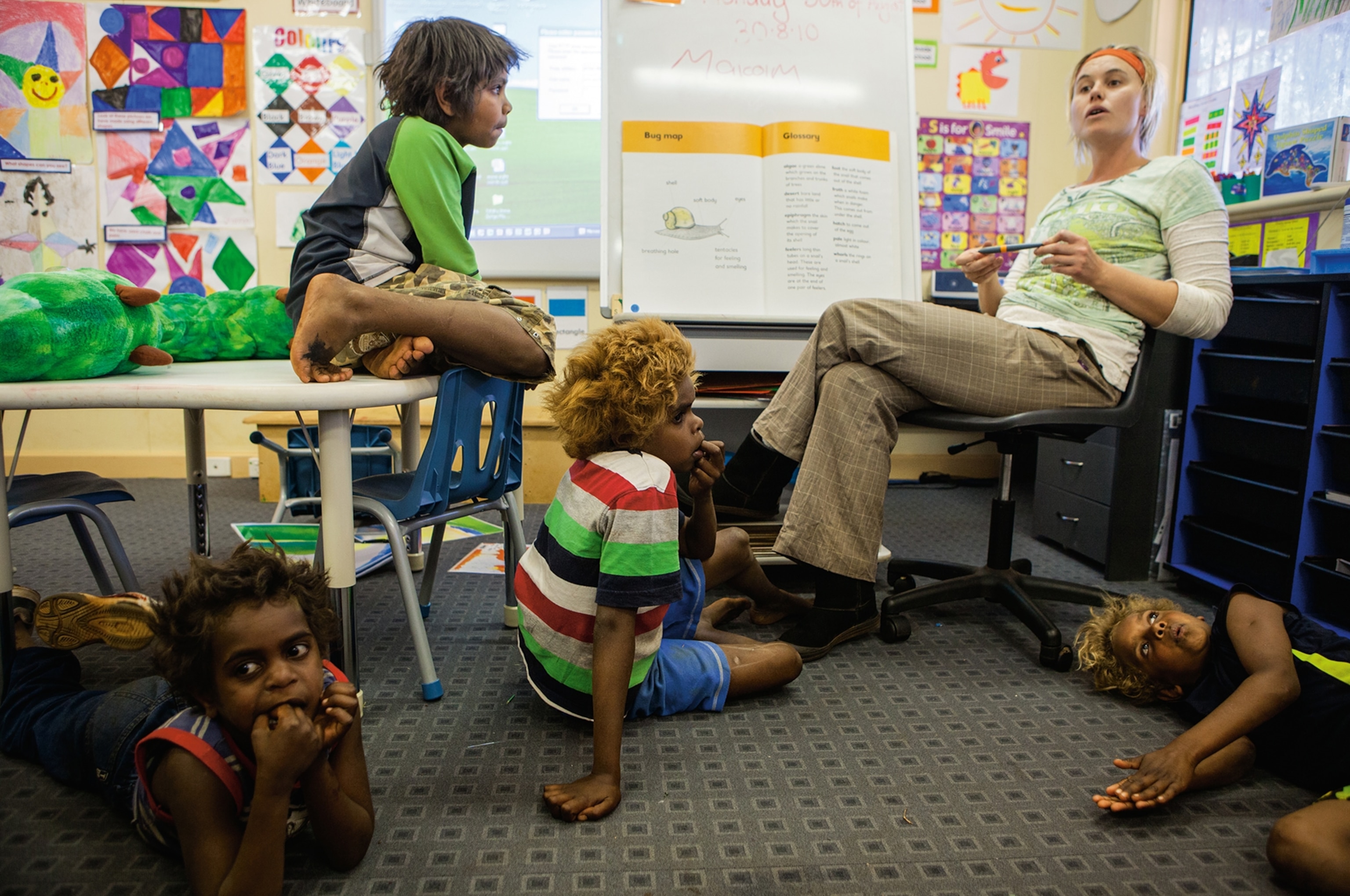
Money to purchase tobacco and gas and other staples—tea, flour, sugar, and a favorite in Matamata, tins of Tom Piper Homestyle Irish Stew—comes from several sources. The Yolngu are occasionally employed to perform manual jobs in various communities; during my visit a group of men helped raise a water tank onto a tower. For this work they receive a government wage of up to $280 a week. Many who aren’t working are given money as well, government payments that low-income Australians are entitled to, Aboriginal or not. Other Aboriginal communities receive large royalty payments from mining companies. Bauxite, a chief source of aluminum, is bountiful in Arnhem Land. Batumbil has steadfastly refused to allow a shovelful of her land to be touched by a mining company, despite lucrative entreaties. “You’d have to shoot me and walk over my dead body before mining here,” she says.
Batumbil’s bark paintings, intricately crosshatched, the pigments homemade from white clay, sell for $1,500. Her string bags, ornamented with bird feathers, cost $500. Her dream is to acquire satellite Internet—that’ll soon be possible—and start a website and sell her work online, thereby avoiding art gallery commissions. A couple of the men also earn money buying and selling a tan powdered substance called kava, made from the root of a plant, that’s mixed with water to produce a nonalcoholic but sedative drink used to unwind in the evenings.
There’s a car in Matamata, a rusty white Land Cruiser that everyone yearns to ride around in, possibly because it contains the village’s only air conditioner. The temperature can climb close to 100°F nearly every month of the year. Several times a day a load of people will drive the tenth of a mile to the shoreline to check whether the tide’s right for turtle hunting. The last of the gas is usually saved for a shopping trip. The nearest decently stocked store, in the mining company town of Nhulunbuy, is a four-hour drive, high speed on the narrow, sandy roads, tree branches clawing the Cruiser’s sides.
Matamata has two general seasons—the wet, usually from December to March, and the dry, the rest of the year. The roads turn to soup during the wet, but you can always take a boat around the coastline, half a day to town. A plane also lands at least once a week to bring in a health worker, and when it flies off to other Aboriginal communities, a couple of people will often take the empty seats, for a modest fee, and spend time visiting friends and relatives. The Yolngu like to be in motion; the population of Matamata is never the same from day to day. When one of Batumbil’s grandsons hopped in the plane, he took his puppy and his television—“so I can sit down and relax with it”—but didn’t even consider bringing footwear.
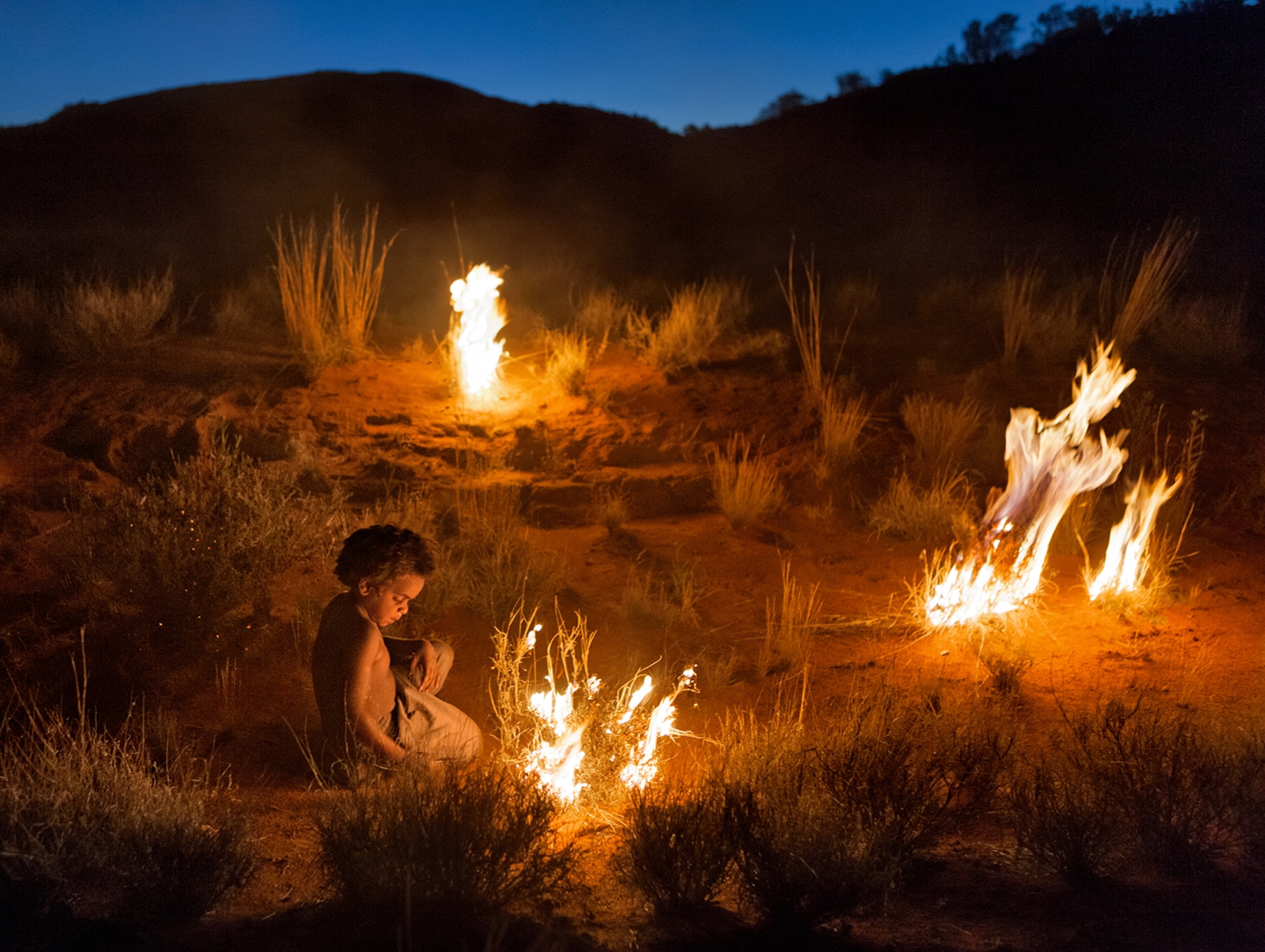
Batumbil does not like sand flies—nobody does—and she has no qualms about killing them. But she does believe she’s related to them. She calls them her grannies. “I tried to have a nap,” she once told me, “but my grannies were all there.” She was being funny—she said it with a smile—though her meaning was serious. Sand flies might torment her, but they are part of her land and therefore imbued with a meaning and a spirit and an essential purpose. The purpose that day, she suggested, was to prevent her from napping, to help her understand that life is not easy.
According to Aboriginal lore, all the Earth’s surface was once a featureless expanse of mud or clay. Then ancestral beings emerged from beneath the surface or from the sky, assumed the form of an animal or plant or human, and journeyed across the land, performing great deeds of creation, shaping the mud into rivers, hills, islands, caves. This took place in an age known as the Dreamtime. And the path each of these beings took, the countryside they molded before burrowing back into the ground, is called a Songline.
The ancestral beings also gave birth to all living things, including humans. They bestowed language, knowledge, ritual, and faith. Every Aboriginal has a Dreaming—the ancestor that gave rise to him or her, be it snake or turtle or yam. One of Batumbil’s family’s Dreamings is the dingo, the wild dog of Australia, which is why she loves to be surrounded by dogs. It’s essential, Batumbil says, to know the Songline of your Dreaming, to be able to follow the route of your particular ancestral being, to speak its language, to learn its music.
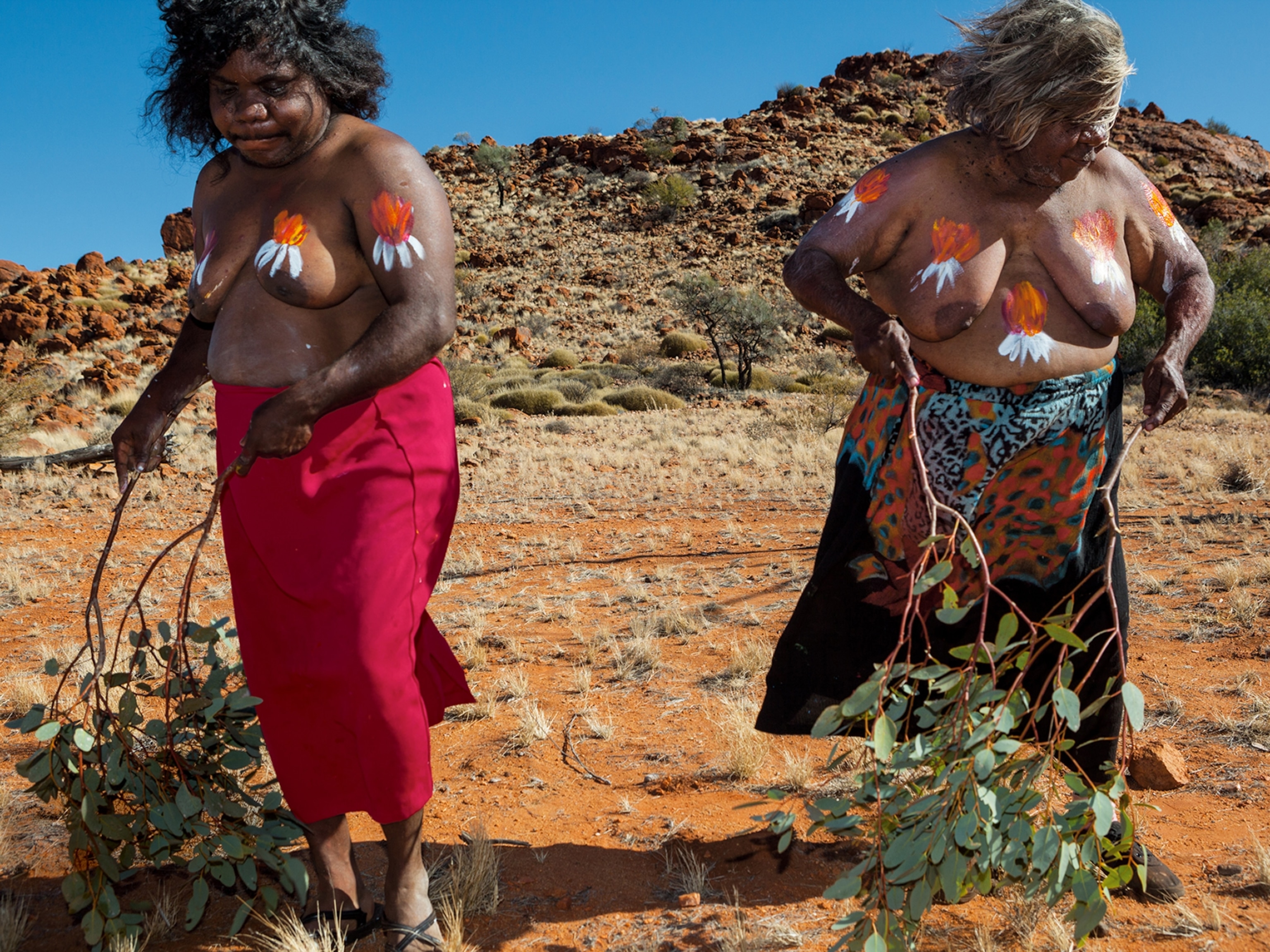
This all-encompassing spirituality is not expressed overtly. People in Matamata don’t go around constantly praying or singing. In daily life, in fact, there seems to be no obvious ritual at all, though there are superstitions. Walking alone, it’s believed, makes you vulnerable to sorcery. Even when someone in Matamata goes to the bathroom—there are outhouses—it is standard to take a partner along. At the Matamata cemetery, the grave sites piled with plastic flowers, the only religious symbol is a Christian cross with the words “I Am the Way” written on it in English, evidence of the Methodist missionaries who arrived in Arnhem Land in the early 1900s. There are two main occasions when the full force of Aboriginal beliefs is on display: at a boy’s initiation ceremony, which takes place around age ten, and at a funeral.
I’m invited to join several people from Matamata at a funeral for a respected Yolngu elder, held on an expanse of beach sand near the town of Yirrkala. The men smear their faces and bodies with white clay and move onto the sand in a large group, carrying ceremonial spears. They stand before a specially constructed cloth-walled tent in which the body lies. Older men provide the music—a rhythmic crack of clapsticks, a trilling chant, the thrumming drone of the didgeridoo. Then the dancers, like the ancestral beings of the Dreamtime, seem to shift shape before my eyes, contorting their bodies, elongating their necks, stomping their feet and thrusting spears, all moving together, a many-legged creature, sand flying, sweat streaming.
Each dance, mimicking an animal or a natural event, is short and intense. There’s the white seagull dance, the octopus dance, the north wind dance, the cockatoo dance. Some are performed only by women. The dances last all day, and another, and another—the funeral carries on for ten days—as people stream in from communities across the bush to pay respect, to dance some more, to set the soul on its journey with the grandest possible send-off. I ask a couple of people for a description of the afterlife, and their answers are similar. “We don’t know what happens when you die,” they reply.
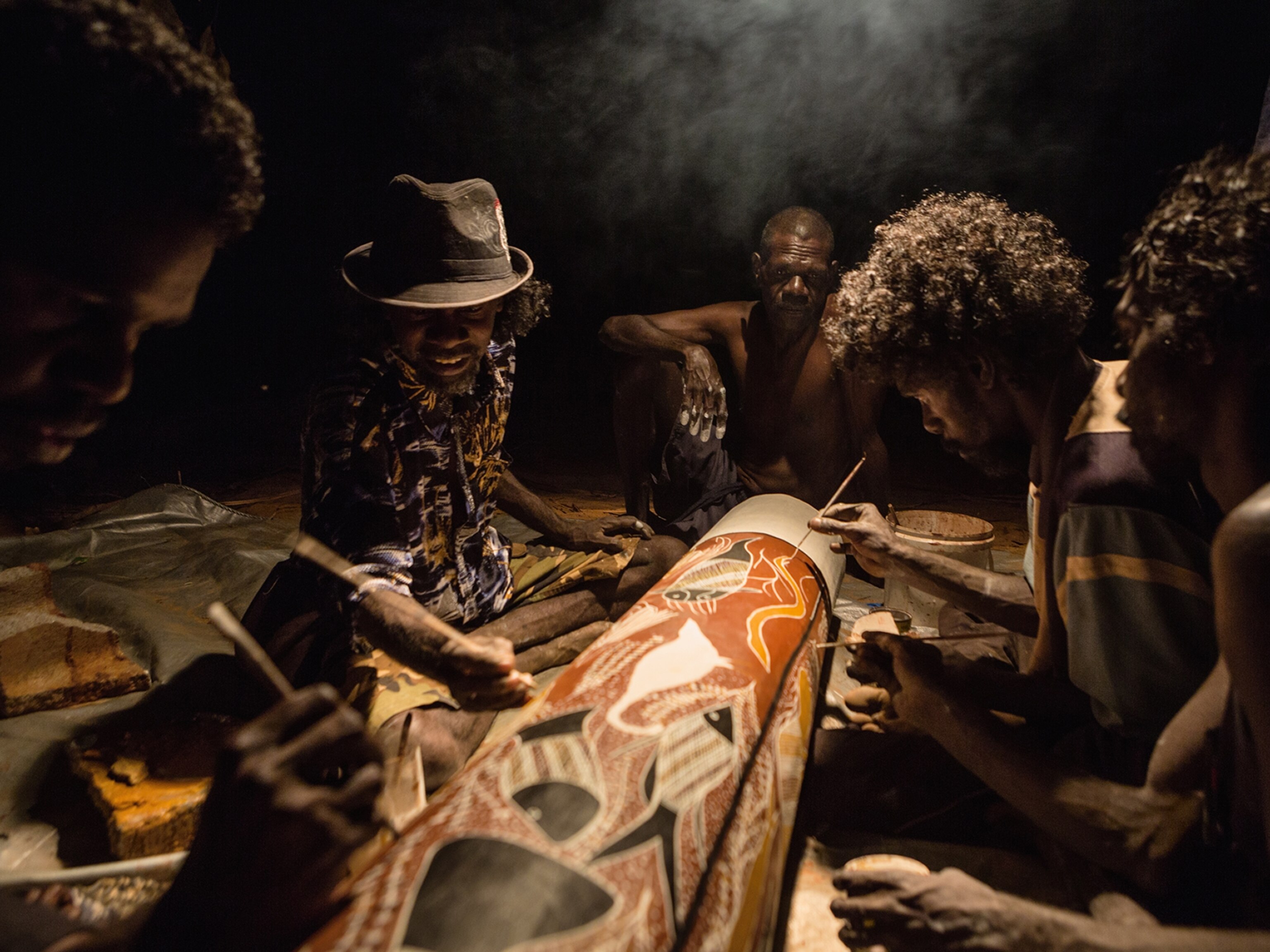
The Yolngu, says Batumbil, are people of fire. Not long ago they started fires by spinning a stick between their palms. Now they use disposable cigarette lighters. As they walk about their territory, they set frequent bushfires. Children, even toddlers, are permitted to start their own. This practice keeps the land clear of downed trees and tall grasses, allowing easier movement through the bush and renewing plant life.
But look at everyone’s eyes when a fire is lit: This is something deeper than good forest stewardship. Touch a flame to the tip of a palm leaf. It’s the dry season; the leaf explodes. In moments the whole tree’s ablaze, a cauldron of fire, and the flames leap to the next tree and drop to the ground. The air turns orange, the heat’s like a bear hug, and the fire dashes whichever way the wind blows it, the bush crackling and smoking—if you’re in the way, run!
There’s no stopping it now; the fire will do what it will. Walk back to Matamata, and in the morning scope the horizon. A brown smudge hangs low in the sky where the fire’s still burning.

It takes 30 to 40 years for a Yolngu to absorb the full breadth of Aboriginal knowledge—to become, as Batumbil describes it, a “living encyclopedia.” Batumbil fears there may soon be no more Yolngu encyclopedias; many Aboriginal groups throughout Australia have already buried their final one. Hunting with boomerangs, used by some tribes for 10,000 years—though never by the Yolngu—hardly exists. “I worry about the next generation,” says Batumbil.
A young man named Marvin Ganyin convinces me that her concern is unnecessary. Ganyin is 23; he and his wife live in the room next to Batumbil. His mother was Batumbil’s daughter, the one who passed away. His father is also dead. He has a two-year-old son.
For a while I’m not sure about Ganyin. The first thing he shows me is a cell phone video of a street brawl he was involved in while visiting Elcho Island. His two loves, he tells me, are fighting and playing Australian rules football. He displays the scars on his knuckles from all his fights. He says he can’t understand the purpose of books. “Reading? What can you do with it when you’re hungry—eat the book?”
But then, on a day when the supply of gas is low and some of the older men drive into town to purchase more, he taps me on the shoulder, hands me a spear, and indicates that I should follow him. We walk into the bush, tabletop flat, anthills the size of tombstones scattered everywhere. He stops beneath a tree and shakes it, and a bunch of wild apples fall out, bright red skin rumpled like bell peppers. “Eat these,” he says, “and you can walk a long way.”
Every creature in the Australian bush, it seems, wants to poison you. There are king brown snakes, cane toads, redback spiders, and taipan snakes. You can’t even swim in the sea—box jellyfish, polka-dot stingrays, blue-ringed octopuses, dozens of species of shark. Then there are the saltwater crocodiles, known as salties, which can grow to 20 feet long. During the two weeks I’m in the bush, two people are eaten by salties, a seven-year-old girl and a nine-year-old boy. I express my grief about this to Batumbil, but she remains unperturbed. These things happen.
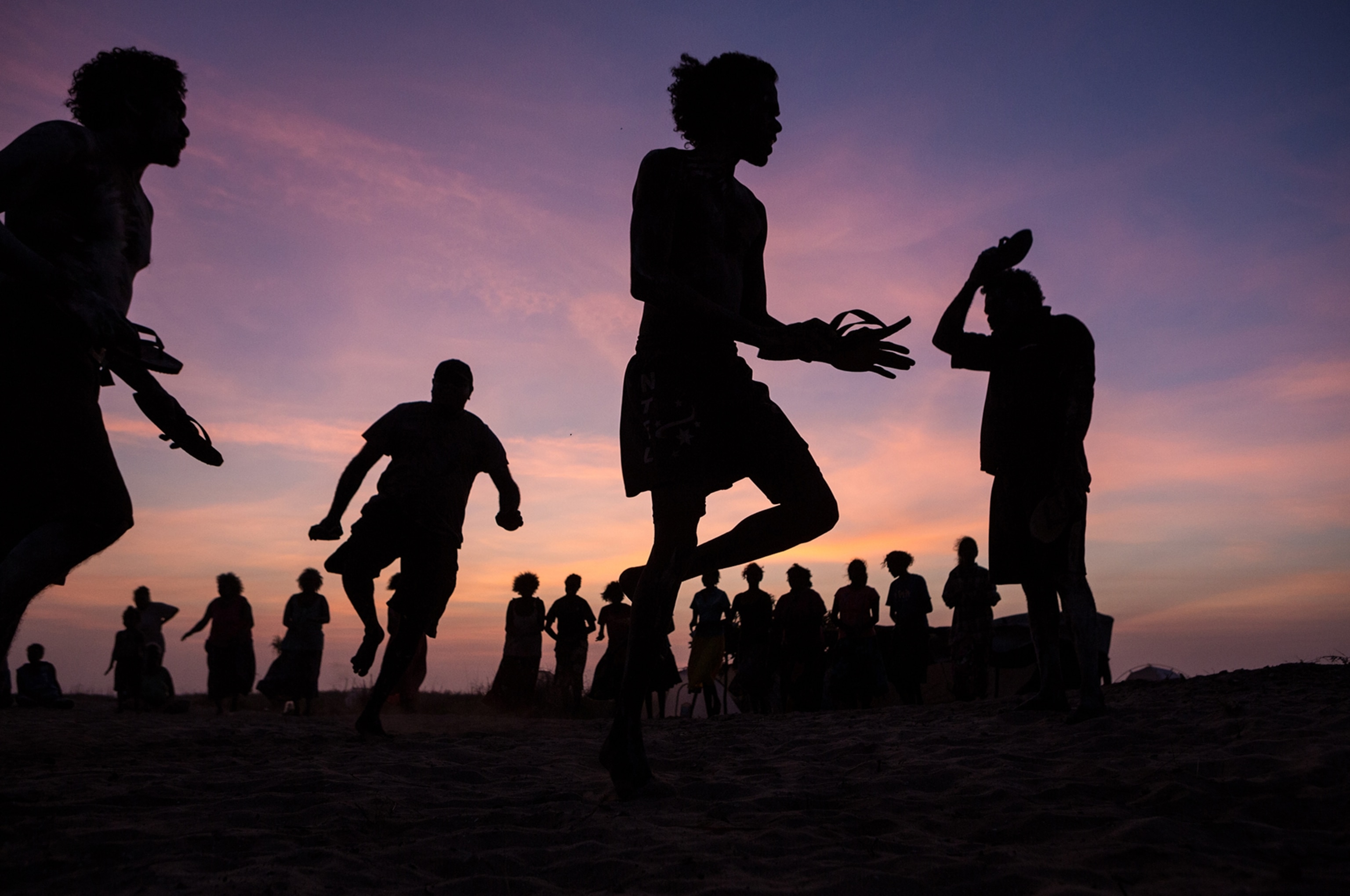
Ganyin and I reach a hill. A sacred hill, he says. This is where the trees for didgeridoos grow. He taps on the trunk of a stringybark. Hollow. The Yolngu claim that didgeridoos were invented in Arnhem Land; they call them yidaki. Ganyin is an expert player, the best I hear in Matamata.
We emerge from the bush at a pristine crescent of beach. Not a footprint. We continue to a natural jetty of black rocks, pimpled with oysters. Ganyin smashes some open, and we slurp them on the half shell. Then Ganyin hurls his spear. A huge crab is skewered. We scramble over to the mangrove forest, where Ganyin breaks off a root and digs his finger inside the soft maroon wood. He pulls out a thick white worm about a foot long. He holds it up and squeezes it, and a muddy brown paste is ejected from the bottom. He hands the worm to me. “Eat it,” he says, eyes alight. I do. Not bad, like a salty calamari.
“Let’s go before the dingoes smell us,” he says. So we turn back. On the way he shows me a flower whose bloom indicates the start of stingray-hunting season. His heroes, he mentions, are Bruce Lee and Muhammad Ali. He insists he could never live in a town. “Too boring. Bad food.” He says there is nothing better in the world than hunting for your own meals. “Even when I have white hair,” he says, “I will still be a hunter.” He is already teaching his son to hunt. Ganyin insists he will learn all the Yolngu ways, he will become an encyclopedia. They will dance for ten days at his funeral.
We arrive at Matamata and cook the crab over a fire and brew tea. Sunset pinks the sky; we slap at the sand flies. Ganyin picks splinters and bits of seashell out of the bottom of his feet with the tip of a scissor. The Land Cruiser arrives loaded with jerry cans of gas—tomorrow we will return to the water and catch more turtle. Ganyin brings out his didgeridoo. It’s decorated only with a few stripes of colored duct tape.
He takes a plastic chair, turns it on its side, and sits cross-legged in front of it. He places the end of the didgeridoo against the seat of the chair, shuts his eyes, and billows his cheeks. Music leaps from the instrument, and the plastic chair creates a warbling reverberation, the pitch rising and falling. I walk through Matamata, and the stars wink on, and the sound of Ganyin’s playing fills the night.



